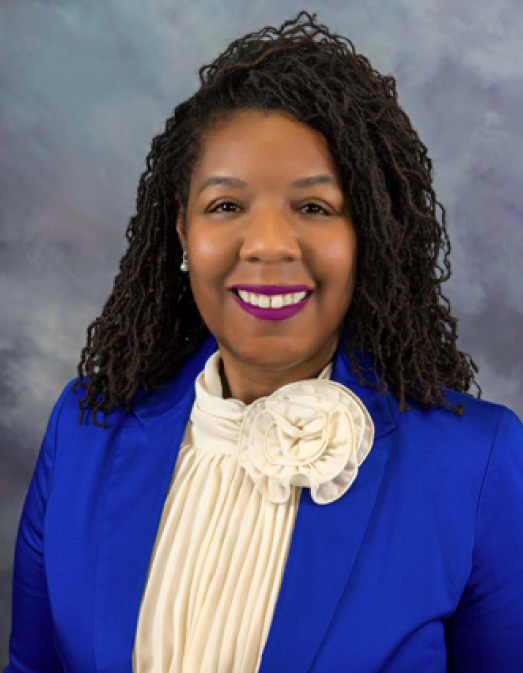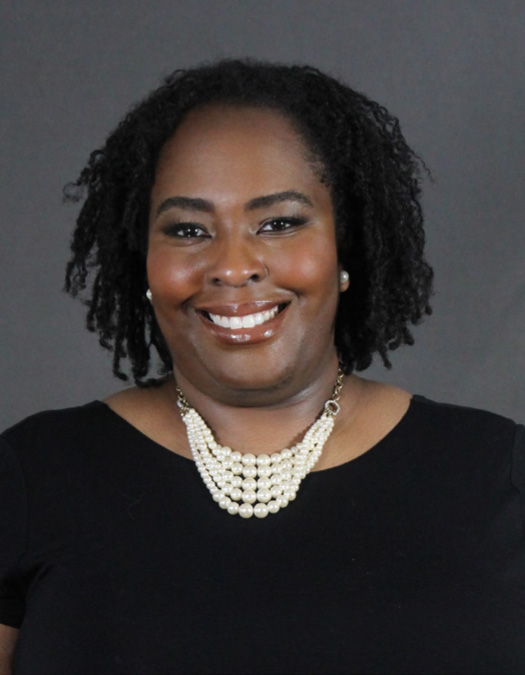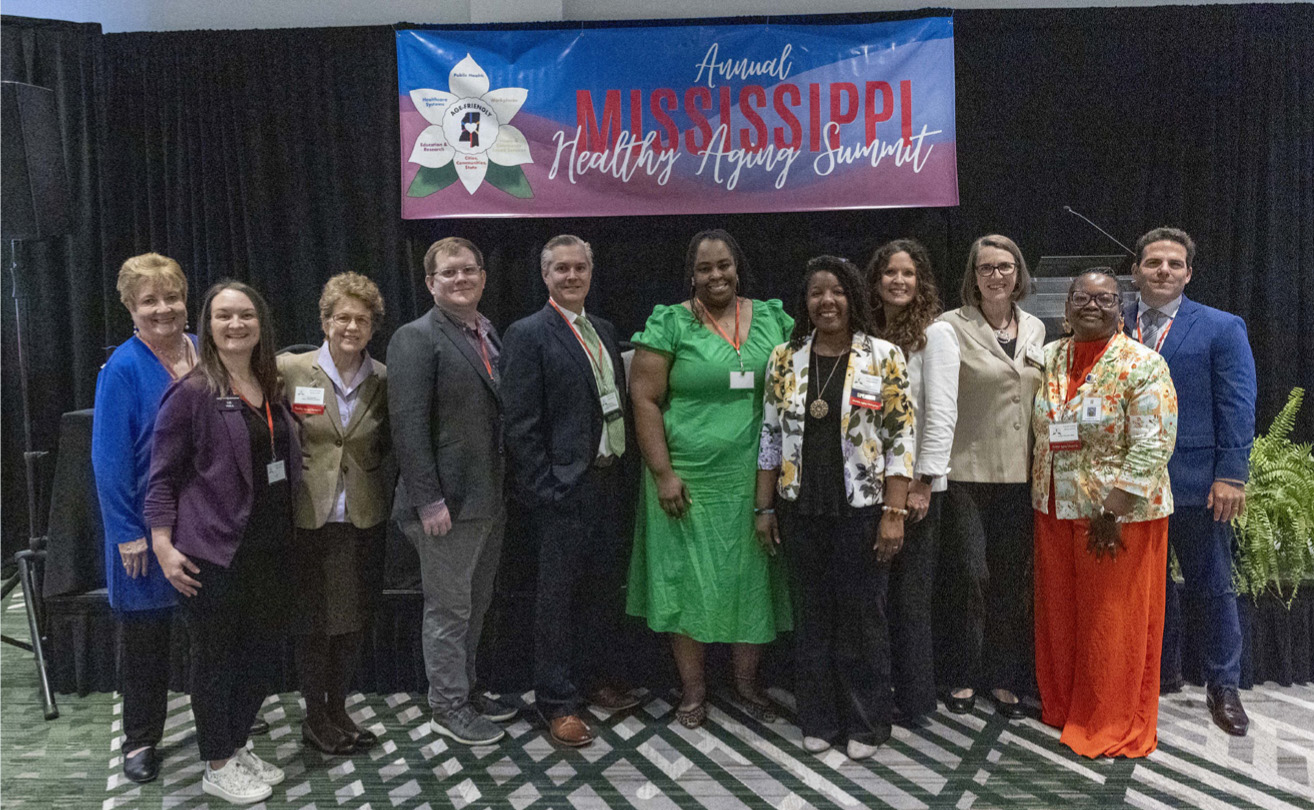A lifespan approach: Prioritizing public health for rural older adults
Kina White, DrPH, wants to change how rural people see aging. Many individuals have a negative attitude toward getting older – “they see it as the end of life,” she says, a stigma that also impacts public health and policy efforts geared toward older adults. This is particularly true in the largely rural state of Mississippi, which has the lowest life expectancy and some of the worst health outcomes in the country. But many rural people over 65 are still healthy and energetic, and they want to spend their golden years at home contributing meaningfully to their community.
 Kina White“Especially when we look at rural priorities and having limited resources, many see aging as futile with no hope,” says White, who serves as director of the Office of State Health Planning and Research at the Mississippi State Department of Health (MSDH). “That is a stigma and a bias we have to fight on a daily basis because getting older is a journey. What age-friendly public health and policy work has done is look at the continuum of life instead of just the beginning and the end.”
Kina White“Especially when we look at rural priorities and having limited resources, many see aging as futile with no hope,” says White, who serves as director of the Office of State Health Planning and Research at the Mississippi State Department of Health (MSDH). “That is a stigma and a bias we have to fight on a daily basis because getting older is a journey. What age-friendly public health and policy work has done is look at the continuum of life instead of just the beginning and the end.”
In Mississippi, a central piece of the effort to reframe negative perceptions of aging and support rural older adults began at the height of the COVID-19 pandemic in 2020, when MSDH applied for Age-Friendly Health Systems funding from Trust for America’s Health (TFAH) and became one of only two states to receive the award. Prior to 2020, Mississippi did not have a dedicated unit for healthy aging, which was particularly detrimental to rural populations that are often more isolated and struggle with more chronic diseases. Since then, the state has become a national leader in the rural age-friendly movement.
Looking through a rural lens
Developed by The John A. Hartford Foundation and Institute for Healthcare Improvement, the Age-Friendly Health Systems movement entails reliably providing a set of four evidence-based elements of high-quality care known as the 4Ms to all older adults: what matters, medication, mentation, and mobility. When MSDH incorporated these features into their work, they looked at every step of the process through a rural lens.
“We are a very rural state, so when we developed our age-friendly work plan we incorporated rural counties, leadership, and dissemination efforts,” White says. “We have seen a lack of accessibility to information in our rural communities, so we were very intentional in developing a plan that included our rural population.”
"What age-friendly public health and policy work has done is look at the continuum of life instead of just the beginning and the end." – Kina White |
In the early days of the pandemic, White says that making the “business case” for why public health should be involved in aging was an important first step in engaging partners and getting local and state leaders on board. She also says finding a champion is vital to moving this work forward, a role she assumed for the rural age-friendly initiatives in Mississippi.
“In a state such as Mississippi where you’re limited in resources and your health outcomes are some of the worst in the country, making the case for why we should prioritize funding for older adults in rural spaces was a very difficult thing to do,” White says. “You need a champion who is willing to take the hits, who is willing to take the closed doors and open new ones, who is willing to look at outcomes from a long-term perspective. I’ve been afforded the opportunity to do age-friendly work because it’s for the greater good.”
Partnering for success
In this endeavor, MSDH has found success due to the continued support of TFAH, a nonprofit, nonpartisan public health policy, research, and advocacy organization dedicated to promoting optimal health and preventing illness and injury. After receiving funding from The John A. Hartford Foundation in 2018, TFAH began looking at ways public health could support healthy aging, particularly in rural communities. This prompted TFAH to collaborate with NRHA and begin their work with state departments of health such as MSDH.
 Karon Phillips“Rural communities look different across the country, and they also look different than urban and suburban communities,” says Karon Phillips, PhD, TFAH policy development manager. “We conducted a focus group on the challenges and opportunities of aging in rural America. Working with Dr. White and other colleagues including NRHA, we learned how public health can support healthy aging in rural communities.”
Karon Phillips“Rural communities look different across the country, and they also look different than urban and suburban communities,” says Karon Phillips, PhD, TFAH policy development manager. “We conducted a focus group on the challenges and opportunities of aging in rural America. Working with Dr. White and other colleagues including NRHA, we learned how public health can support healthy aging in rural communities.”
Through their age-friendly public health efforts, White and her colleagues at MSDH have gained a clearer picture of how many homebound older adults live in their state – as well as the many barriers that prevent them from accessing health care, including chronic illnesses and a lack of transportation. MSDH has worked with local, state, and federal partners to create a list of older adults and come up with ways to reach them, such as working with AAA, EMS, AARP, and local agencies on aging. TFAH’s collaborations with NRHA have also informed their work with MSDH.
“It has been tremendously rewarding to be part of the work happening with NRHA,” says Phillips, who serves on the advisory committee for NRHA’s National Rural Age-Friendly Initiative. “It has been great to share and learn how other colleagues are thinking about rural aging. That relationship with NRHA has helped us reflect on how this impacts rural communities.”
Creating a better system for all
In Mississippi, healthy aging efforts have also included educating mayors across the state about chronic disease indicators, access to care limitations, and disability metrics to elevate the awareness of aging in a largely rural state. Libraries and faith communities have been instrumental in creating community spaces that are age-friendly and dementia-friendly, allowing isolated individuals to reengage.
Phillips points out that what is good for older adults is often good for everyone, citing an example of an age-friendly community near her home in the Washington, D.C., area. These types of environments typically feature walkable spaces, accessible entertainment, and opportunities for engagement which benefit everyone regardless of age.
"Age-friendly opportunities are intergenerational – they create a better system for all." – Karon Phillips |
“Age-friendly opportunities are intergenerational – they create a better system for all,” Phillips says. “Here they’ve built an independent older adult community next to a library that’s within walking distance of the movie theater and the grocery store. These opportunities are not just age-friendly – they’re community friendly. It’s much more progressive and exciting than the ageist mentality that still commonly exists.”
“Aging with dignity is all of us being able to healthily age in our own environment,” White adds. “We are looking at the intersectionality between health and community. It’s a lifespan approach – it’s not just the end of life but creating a built environment for all of us to healthily age. As we build the community up to help older adults, it allows others to benefit from those same resources.”
A model for other states
Five years after MSDH received the Age-Friendly Health Systems funding, their project has evolved into an advanced ecosystem known as Age- Friendly Mississippi. Through collaborations with national partners including NRHA, TFAH, AARP, and Grantmakers in Health, Mississippi has become a model for other states aiming to pursue age-friendly public health programs.
“We have shown that in a rural state such as Mississippi, this is possible,” White says. “We have created seats at the table for those who otherwise wouldn’t see themselves present. Through that lens of collaboration, we have become a model for other states. If Mississippi can do it, anyone can.”
 NRHA CEO Alan Morgan (center) joins Kina and Karon at the Mississippi Healthy Aging Summit
NRHA CEO Alan Morgan (center) joins Kina and Karon at the Mississippi Healthy Aging Summit
Going forward, Phillips encourages partners to consider ways they can utilize existing public health efforts to promote healthy aging, such as expanding health and nutrition services to include older adults and looking at emergency preparedness plans. Phillips and White are excited to continue this work in the future – both to make a positive difference in the lives of rural older adults and the communities where they live.
“What’s exciting for me is the words ‘Mississippi’ and ‘success’ being synonymous,” White says. “I am appreciative and thankful of the opportunity to be invited into places where we can change the stigma associated with our state and show that it is possible to create a positive movement and momentum. We can change minds.”
The National Rural Age-Friendly Initiative is a joint effort between the National Rural Health Association and The John A. Hartford Foundation to develop resources, partnerships and strategies to build age-friendly care for the one in five older adults living in rural geographies.
NRHA and The John A. Hartford Foundation compiled and published the association’s first Compendium of Best Practices for Rural Age- Friendly Care in late 2024, highlighting best practices from across the US that can be built upon in rural communities.
